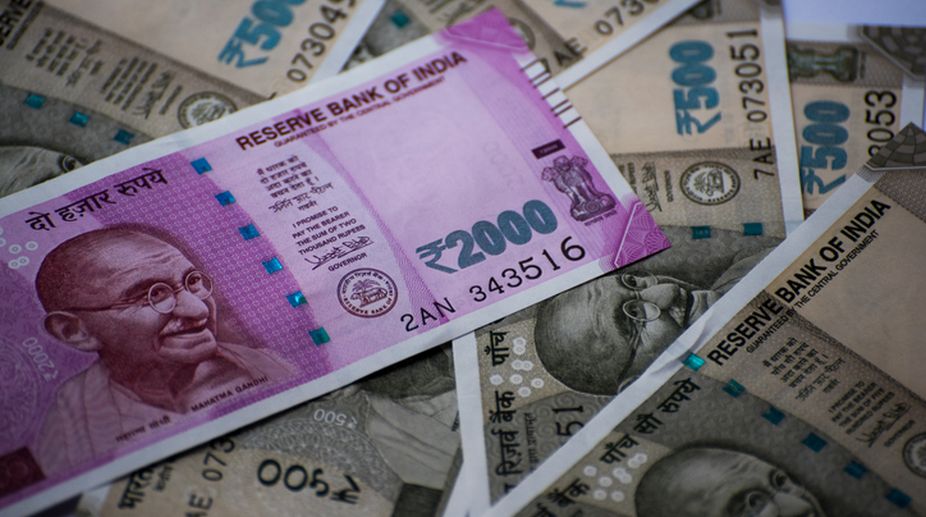A vote for BJP will ensure Tripura’s prosperity: PM to Agartala electorate
Modi claimed that the North East policy of the Congress and the Communists was a Loot East policy, which the BJP buried 10 years back and initiated an Act East Policy.

(Photo Credits: Getty Images)
The Indian Economy is one of the fastest developing economies in the world and the seventh largest by nominal Gross Domestic Product (GDP). It is the third largest by purchasing power in the global market. Today, the condition of the economy is being highlighted in many discussions. That is obvious given the new actions taken by the government which include demonetisation and Goods and Service Tax (GST). These actions were taken as a way of eradicating black money and forming a common tax structure to avoid any form of corruption by tax collectors.
Considering the thriving GDP growth rates in the previous years, a sudden action to turn the economy into a cashless economy and curb illegal businesses such as black marketing took the world by shock. The plan of having a common tax structure, however, was a more planned out action which was pioneered by PM Atal Bihari Vajpayee in the year 2000 as a reform to the excise taxation system in India. About 17 years later, the government implemented the GST model on the economy. These government interventions have had some huge impacts on the economy as it still tries to adjust with the campaign.
On 8 November 2016, Prime Minister Narendra Modi made a sudden announcement addressing to the nation that Rs. 500 and Rs. 1,000 denomination notes won’t be valid after midnight. The main objective of this abrupt action was to eradicate black money or money earned by tax evasion in the economy.
Advertisement
Other reasons include combating counterfeit or bogus currency that was being used to fund terrorists and to turn the economy into a cashless economy. Initially, there were many problems faced by the Indian economy during the implementation of demonetization. Overnight all the 500 and 1000 rupees notes held no value as people rushed the very next day to get their old banknotes exchanged with new ones. This lead to long queues near several banks.
During this phase, people started facing shortage of cash due to deprivation of money in banks which showed drastic and disturbing impacts on the economy. People couldn’t buy their household and day-to- day necessities – unless they had credit or debit cards to pay. In short, the day to day transactions in the country got mostly impacted bringing chaos and inconvenience to the common people.
In the same line, on July 1, 2017, the Government and Services Tax Act was implemented in India. In general, GST is Indirect Taxes imposed on the production of goods and services. The act helped in making business and taxes more simpler and easier as it replaced all the other multiple indirect taxes that were being levied by the central and state governments all over India.
The objective of the implementation of GST was to expunge the cascading tax effect and rectify all the unorganized sectors in India. Other objectives include decreasing unhealthy competition among states and improving GDP rates by increasing threshold for registration. Many sectors were affected due to the implementation of GST including real estate, pharmaceuticals, healthcare and automobile sectors.
It’s been a year or so ever since these bold plans came into action. The impact of the actions is very significant on the economy. Demonetisation successfully provided a running start to the non-cash payments in the short run. In fact, demonetisation helped all the digital payment platforms to develop at a very quick rate. According to top government officials during a parliamentary panel, the money transactions through digital platforms increased by 23% (an estimated 27.5 million in May 2017). It also helped in conjuring quite an impact on the stock of black money. Demonetization also helped in building the tax base.
As mentioned on the website of Times Now, there was an increase in the number of people paying income tax returns by 25%. 1 Moreover, there were claims by the RBI, that the estimated Rs 15.4 lakh crore removed from circulation had been collected.
GST also had many positive impacts on the economy. Many people were seen setting up new businesses as it became easy to run businesses in various states all over India as taxes were simpler to pay because of one tax system. It has allowed transparency in the tax system as now there is a value addition for every stage of supply.
Like demonetisation, GST also helped in expanding the tax base as under the GST bill all sorts of goods and services are taxable. It also helped in offloading the burden of disproportional tax payment as now the burden is equally divided between manufacturing and services. It is also expected that the impacts of these actions are going to boost the economy’s GDP to 8% this year.
GST and demonetisation have affected the economy in both negative and positive ways. However, as time goes by, the positive impacts, in the long run, seems to outweigh the negative impacts in the short run.
(The writer is a freelance contributor)
Advertisement